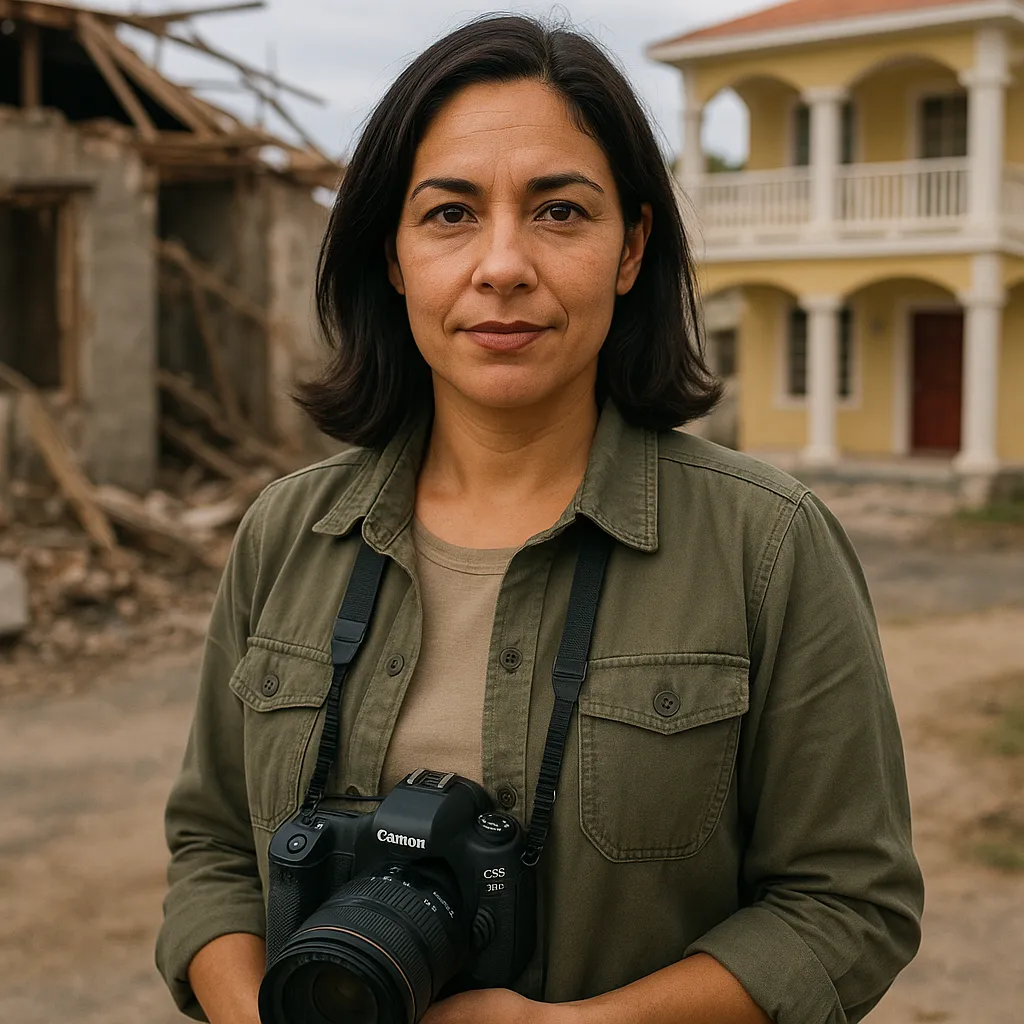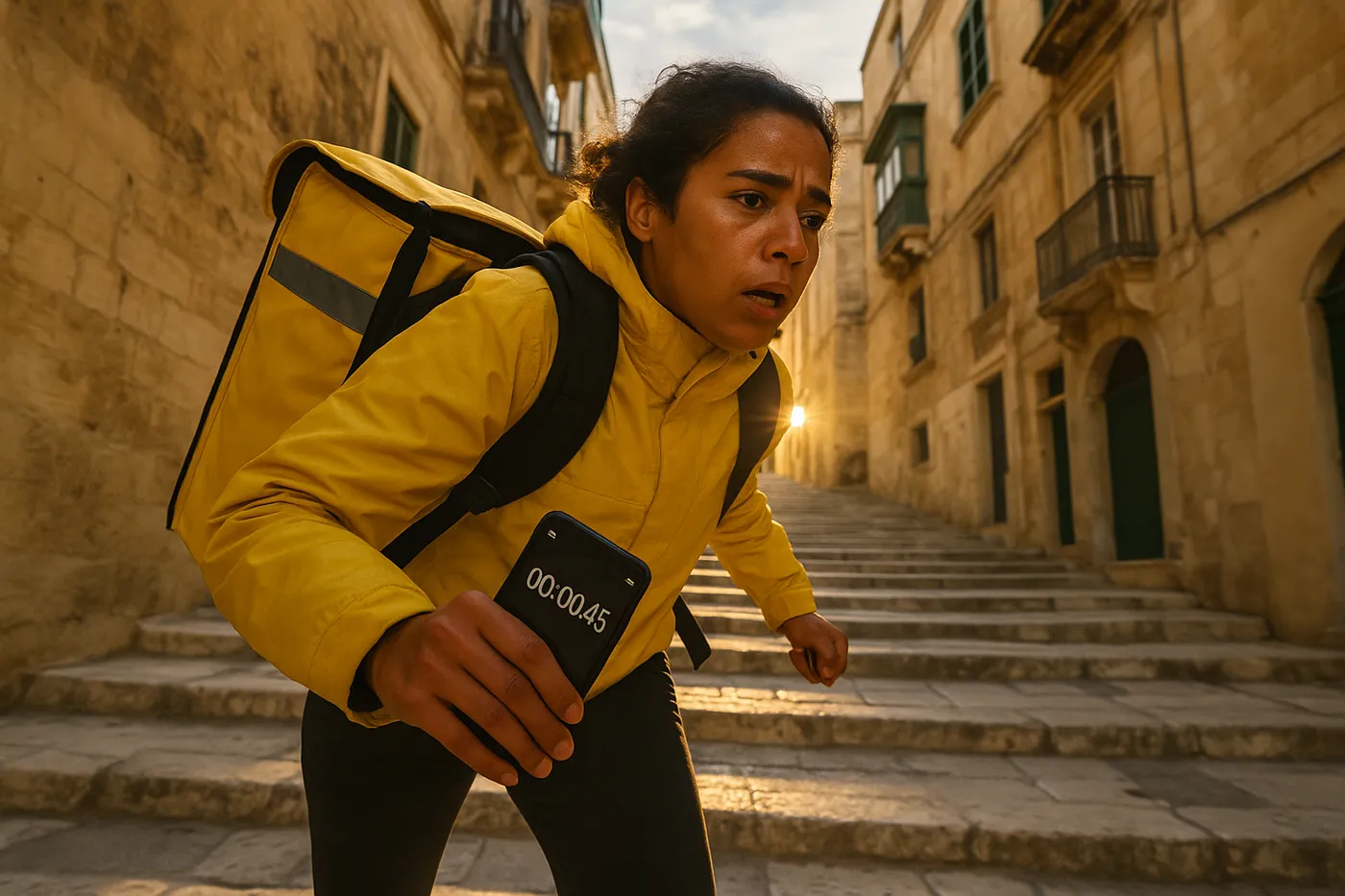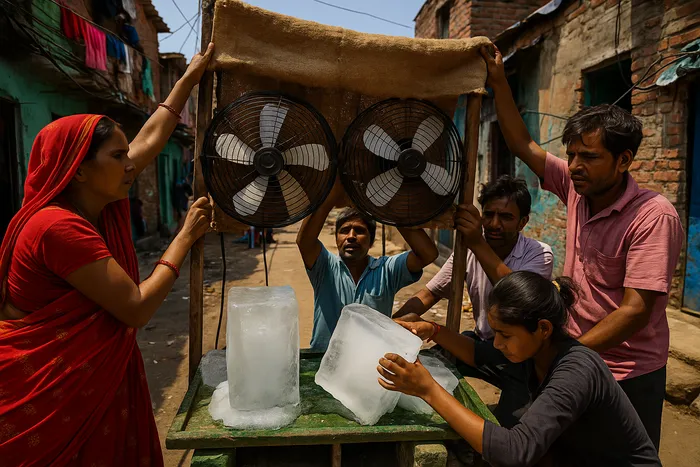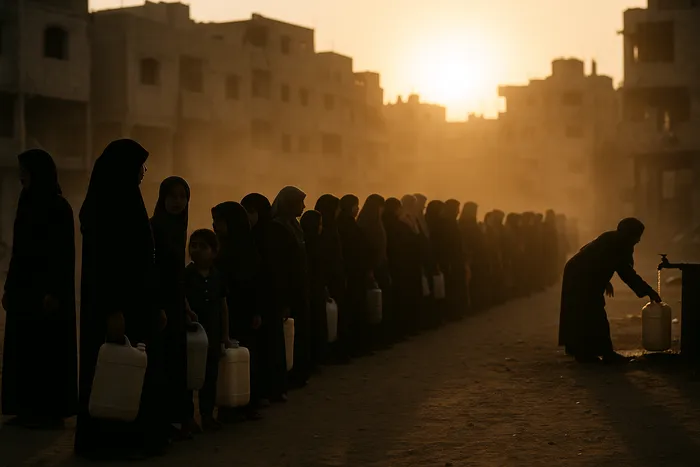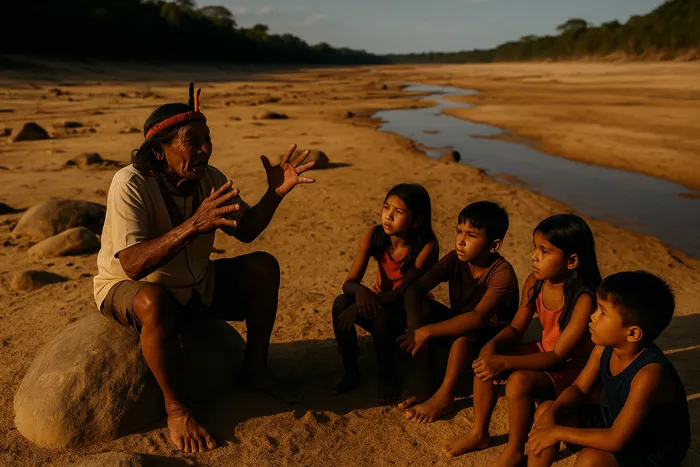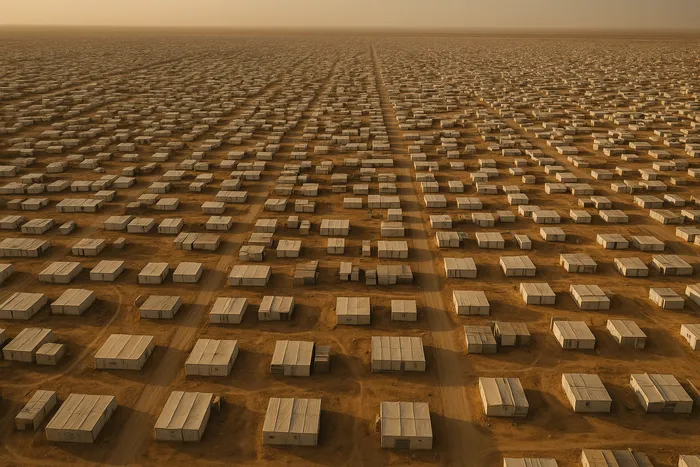The New Normal
In 2024, as climate disasters surged to unprecedented levels with 27 billion-dollar disasters in the United States alone, Elena Vasquez returned to the communities she had been documenting since Hurricane Maria devastated Puerto Rico in 2017. What she found was not just recovery, but transformation—entire communities that had learned to live with the constant expectation of the next storm, the next flood, the next evacuation. These are not communities in crisis, but communities that have moved beyond crisis into something else entirely: a new normal where disaster preparation shapes daily rhythms, where children grow up practicing evacuation routes as naturally as multiplication tables, where architectural choices and economic planning center on the assumption that the next climate disaster is not a matter of if, but when.
Vasquez's documentation captures this profound shift in how humans organize their lives around climate reality. Her subjects are not victims waiting for rescue, but active agents of adaptation who have reorganized family schedules, modified homes, changed careers, and restructured community relationships to maintain dignity and purpose while living under constant environmental threat. The images reveal how climate adaptation involves not just physical infrastructure, but psychological infrastructure—the emotional and social systems that allow people to build meaningful lives while accepting that those lives will be regularly disrupted by forces beyond their control.
The work emerged from Vasquez's realization that traditional disaster photography, focused on moments of crisis and immediate aftermath, missed the more significant story of how human communities evolve when environmental uncertainty becomes permanent. "I kept returning to the same families year after year," she explains, "and I started to see that they weren't just rebuilding the same life over and over. They were building different lives—lives designed to flex and bend and continue. That's when I understood I was documenting something historically unprecedented: the emergence of climate-adapted human communities."
This adaptation manifests in countless details that reshape the texture of daily experience. Emergency supplies become permanent household fixtures, organized with the efficiency of long practice. School curricula integrate climate preparedness as naturally as reading and writing. Community social networks function as early warning systems, with neighbors maintaining communication protocols that activate automatically when weather patterns suggest threat. Local economies adapt to accommodate regular disruption, with businesses developing rapid closure and reopening procedures, and workers maintaining skills that remain valuable during reconstruction periods.
Perhaps most significantly, Vasquez documents how children growing up in these communities develop psychological frameworks fundamentally different from previous generations. These children understand environmental uncertainty as baseline reality rather than exceptional threat. They demonstrate remarkable resilience not because they have experienced trauma, but because they have learned to build meaningful lives within systems designed for environmental adaptability. Their casual competence with emergency procedures, their matter-of-fact discussion of storm seasons and evacuation routes, suggests the emergence of the first generation of true climate natives—humans for whom climate adaptation is not learned response to crisis, but inherited cultural knowledge.
The seven images in this series follow families through complete cycles of preparation, impact, and recovery, revealing how these cycles have become integrated into the larger rhythms of community life. Rather than depicting climate disasters as external forces that disrupt normal life, the work shows communities that have redefined normal life to include regular environmental disruption. This represents a profound shift in human relationship with natural systems—from expectation of environmental stability to acceptance of environmental dynamism, and the development of cultural practices that enable human flourishing within that acceptance.
Photographer Bio
Elena Vasquez's path to photojournalism began in the emergency shelter where her family waited out Hurricane Maria's devastation of Puerto Rico in September 2017. While documenting the storm's aftermath for insurance claims, she realized that the most important stories weren't about the immediate destruction, but about how communities and families would rebuild—and how that rebuilding would change them. Her background in emergency management provided technical understanding of disaster response systems, while her personal experience of climate displacement gave her access to the intimate, long-term process of community adaptation that typically remains invisible to outside observers.
Vasquez's approach emphasizes relationship-building over event-chasing. She maintains ongoing connections with dozens of families across hurricane-prone regions, visiting them not just during crisis moments but throughout the entire cycle of preparation, impact, recovery, and adaptation. This longitudinal method allows her to document how climate adaptation evolves over time, revealing patterns and innovations that only emerge through sustained observation. Her work has helped redefine documentary photography's approach to climate change, shifting focus from spectacular destruction to the more complex story of human adaptation and resilience.
Image Captions and Prompts
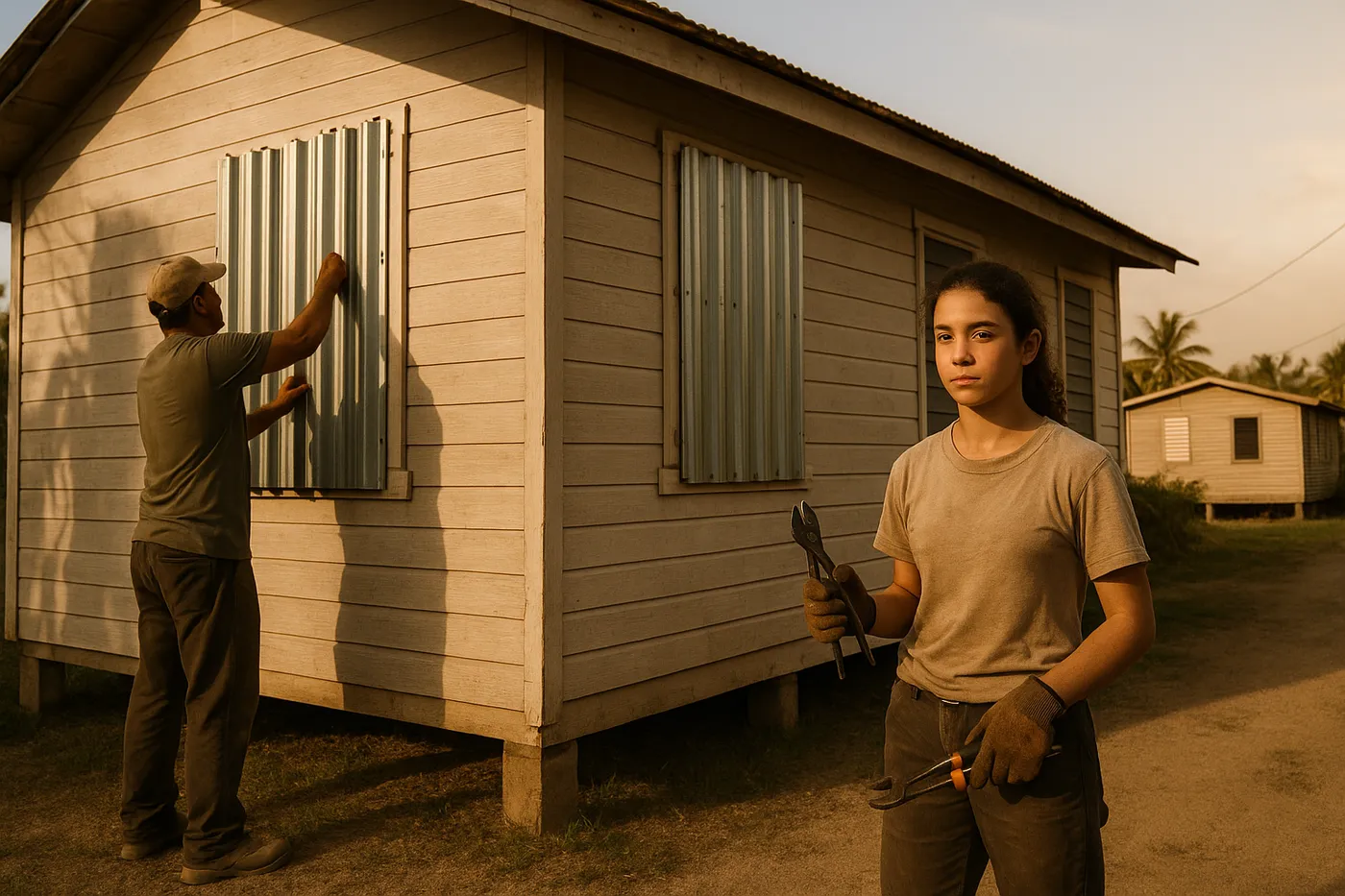
Photo 1: Hurricane Season Prep
Caption: The Ruiz family secures their home in Humacao, Puerto Rico, during pre-hurricane preparation for what locals call "storm season ritual." Maria, 12, helps her father install storm shutters with practiced efficiency learned through annual repetition. What was once exceptional crisis preparation has become regular seasonal routine, with children learning emergency procedures as naturally as they learn household chores. The family maintains detailed checklists and timing procedures that treat potential Category 5 hurricanes as manageable seasonal challenges rather than catastrophic threats.
Prompt: Puerto Rican father and daughter installing metal storm shutters on wooden house windows, Humacao Puerto Rico, daughter holding tools with practiced confidence, both wearing work clothes, late afternoon golden light creating long shadows, shot on Canon EOS 5D Mark IV with 35mm f/5.6 lens, wide environmental shot showing entire house preparation activity, neutral color palette with warm sunset tones, calm determined mood showing routine competence, award-winning photojournalism, World Press Photo style, National Geographic quality
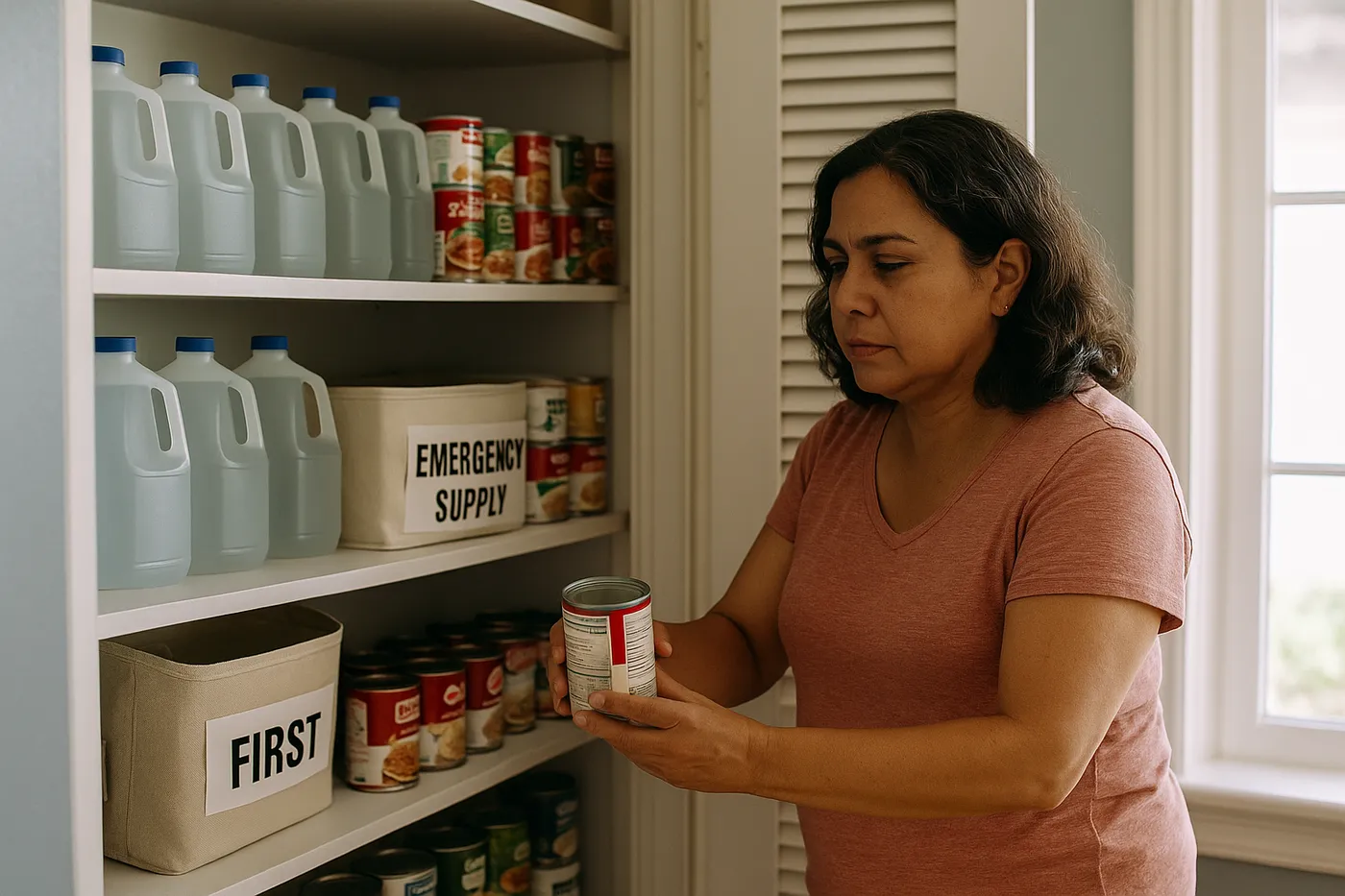
Photo 2: The Emergency Pantry
Caption: Carmen Rodriguez maintains a converted bedroom closet stocked with emergency supplies in her coastal Florida home, organized with the systematic efficiency of someone who has learned to live with regular supply disruption. The shelves contain rotating inventories of water, non-perishable food, medical supplies, and communication equipment, labeled with expiration dates and replacement schedules. This permanent emergency infrastructure represents fundamental shift from viewing disasters as exceptional events to accepting them as regular features of domestic life requiring ongoing management.
Prompt: Middle-aged Latina woman organizing emergency supplies in converted closet, shelves lined with water jugs and canned goods, Florida coastal home interior, medium shot at chest level, shot on Canon EOS 5D Mark IV with 50mm f/2.8 lens, soft natural light from nearby window, organized household efficiency visible in labeled supplies and rotation system, calm domestic atmosphere, award-winning photojournalism, World Press Photo winner
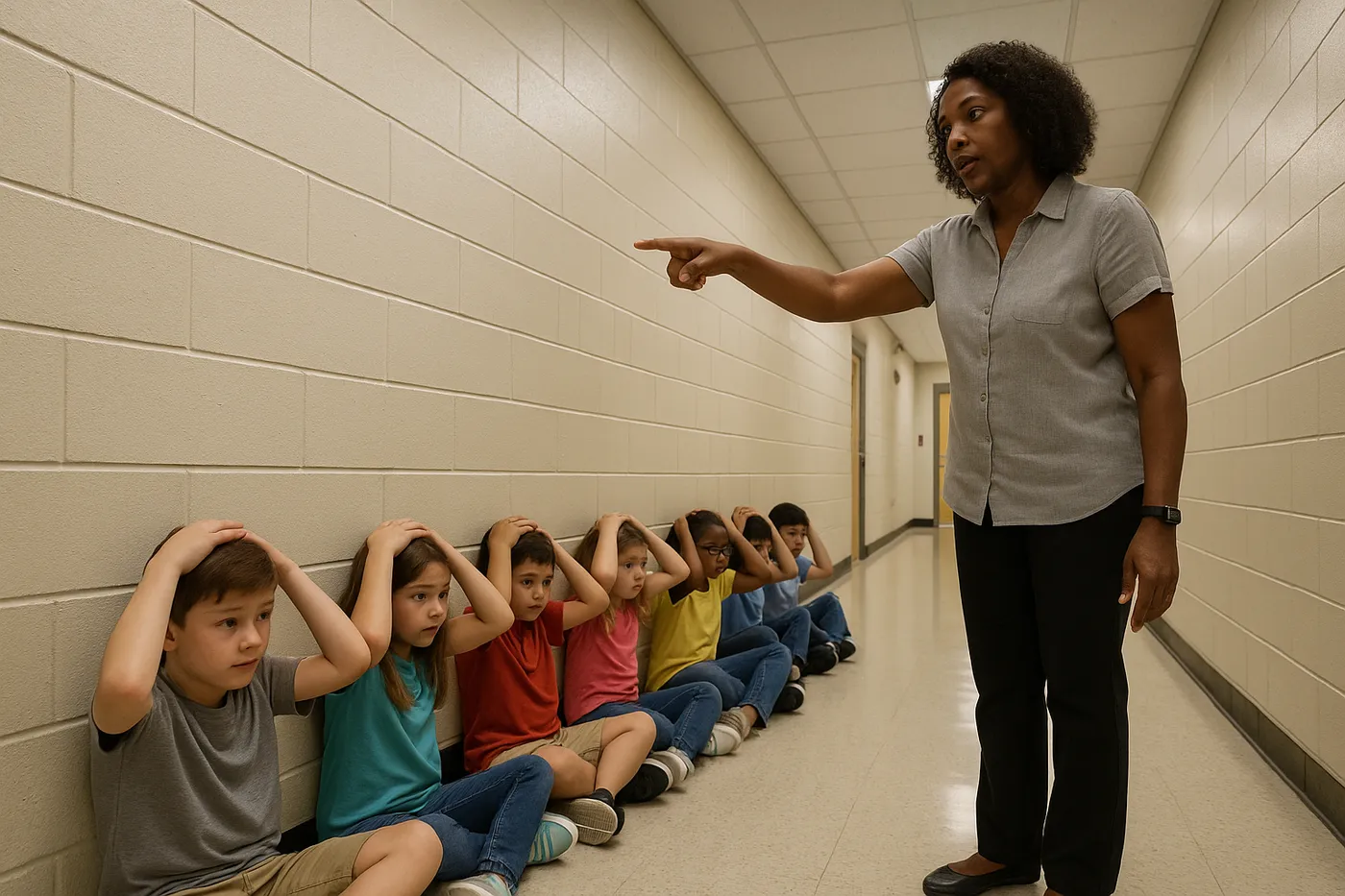
Photo 3: School Shelter Drill
Caption: Third-grade students at Rosa Parks Elementary in Miami practice moving to reinforced interior corridors during a hurricane drill, their casual competence indicating how climate preparedness has become integrated into educational curriculum. Teacher Ms. Johnson maintains calm efficiency while directing students to safe positions, demonstrating how educational institutions adapt to prepare children for environmental uncertainty as routine rather than exceptional threat. These drills occur monthly throughout hurricane season, making climate adaptation as fundamental to education as fire safety.
Prompt: Elementary school children and teacher practicing hurricane safety drill in school hallway, diverse group of 8-year-old students sitting calmly in reinforced corridor, African American female teacher directing with practiced calm, Miami school interior with concrete block walls, shot on Canon EOS 5D Mark IV with 24mm f/8 lens, fluorescent lighting creating even exposure, composed to show organized efficiency and children's matter-of-fact attitude, educational documentary style, award-winning photojournalism, World Press Photo quality
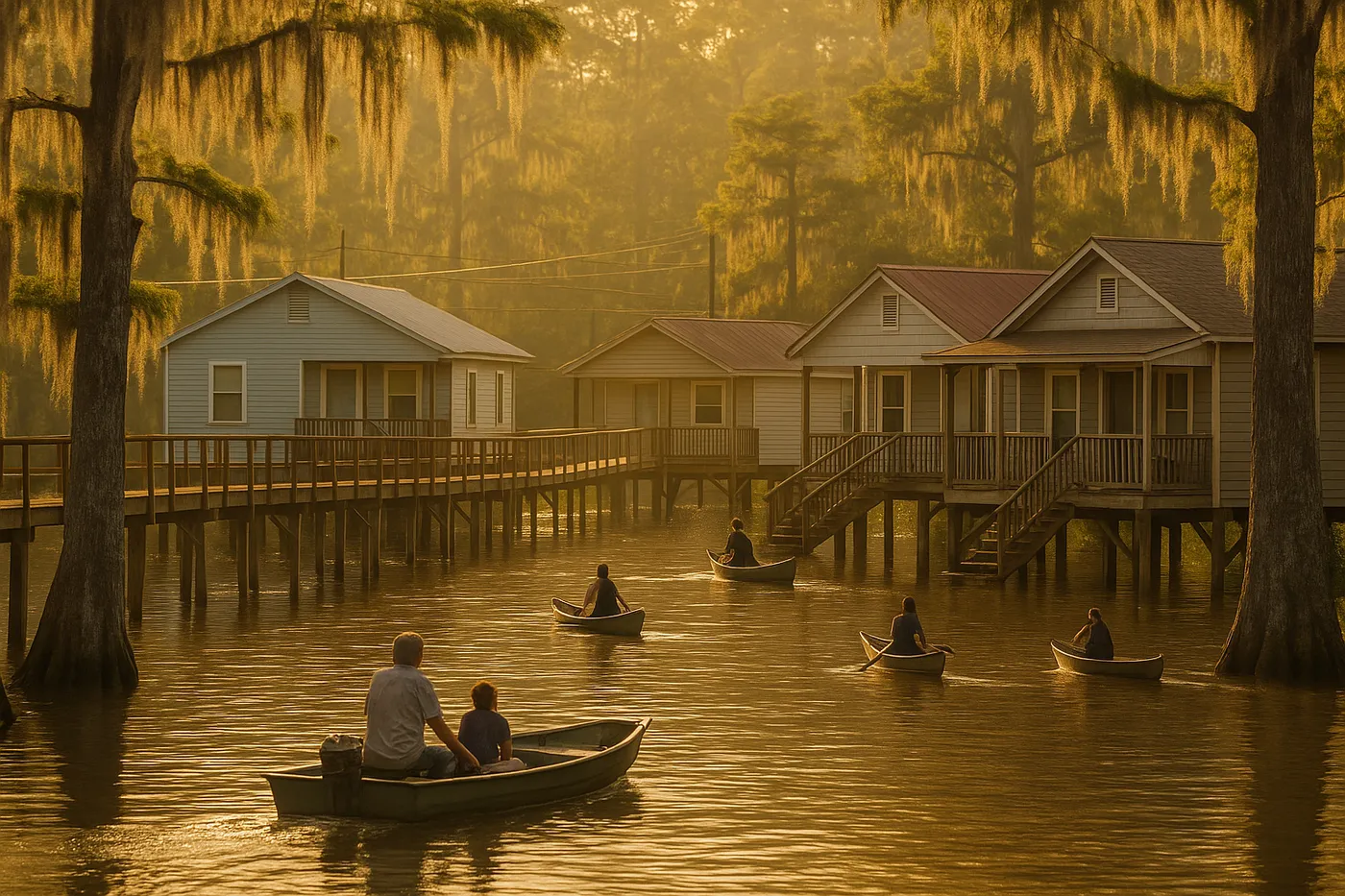
Photo 4: Floating Neighborhoods
Caption: Residents of Shoal Bay, Louisiana, navigate their neighborhood via elevated walkways and small boats during the regular seasonal flooding that has transformed their community's transportation patterns. What began as emergency adaptation has evolved into permanent infrastructure, with homes raised on reinforced pillars and community boat-sharing systems that activate automatically when water levels rise. Children paddle to friends' houses with the same casual competence their grandparents once used bicycles, indicating complete integration of water transportation into daily community life.
Prompt: Louisiana bayou community with houses on stilts connected by elevated wooden walkways, residents using small boats and canoes for transportation during seasonal flooding, Spanish moss hanging from cypress trees, afternoon sunlight filtering through humid air, shot on Canon EOS 5D Mark IV with 70-200mm f/5.6 lens, telephoto compression emphasizing community adaptation infrastructure, warm golden hour lighting, peaceful mood showing routine adaptation to regular flooding, award-winning photojournalism, National Geographic style
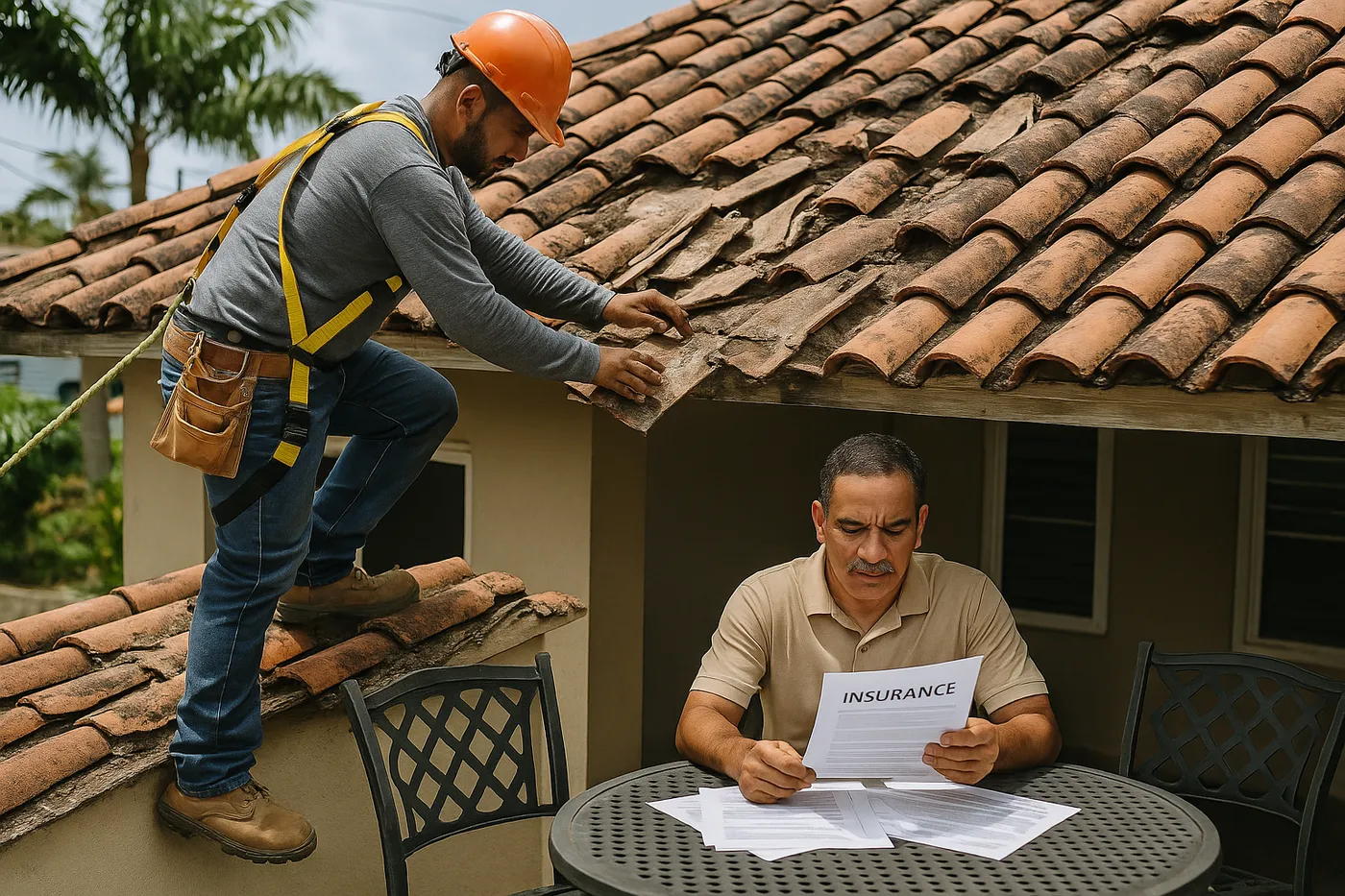
Photo 5: Recovery Rhythm
Caption: Construction worker Luis Morales repairs hurricane-damaged roofing in Toa Baja, Puerto Rico, while homeowner Ana Santiago reviews insurance paperwork, their professional efficiency indicating how disaster recovery has become regular economic activity rather than exceptional emergency response. Morales maintains specialized hurricane reconstruction business that operates in predictable cycles, employing workers who have developed expertise in rapid building restoration. This normalization of disaster recovery creates new economic patterns based on regular environmental disruption.
Prompt: Puerto Rican construction worker repairing damaged clay tile roof while homeowner reviews insurance documents below, Toa Baja Puerto Rico, worker wearing safety equipment and tool belt, homeowner at outdoor table with paperwork, shot on Canon EOS 5D Mark IV with 85mm f/4 lens, natural daylight creating clear detail, composition showing both physical reconstruction and administrative recovery process, professional competence and routine efficiency visible, award-winning photojournalism, World Press Photo winner
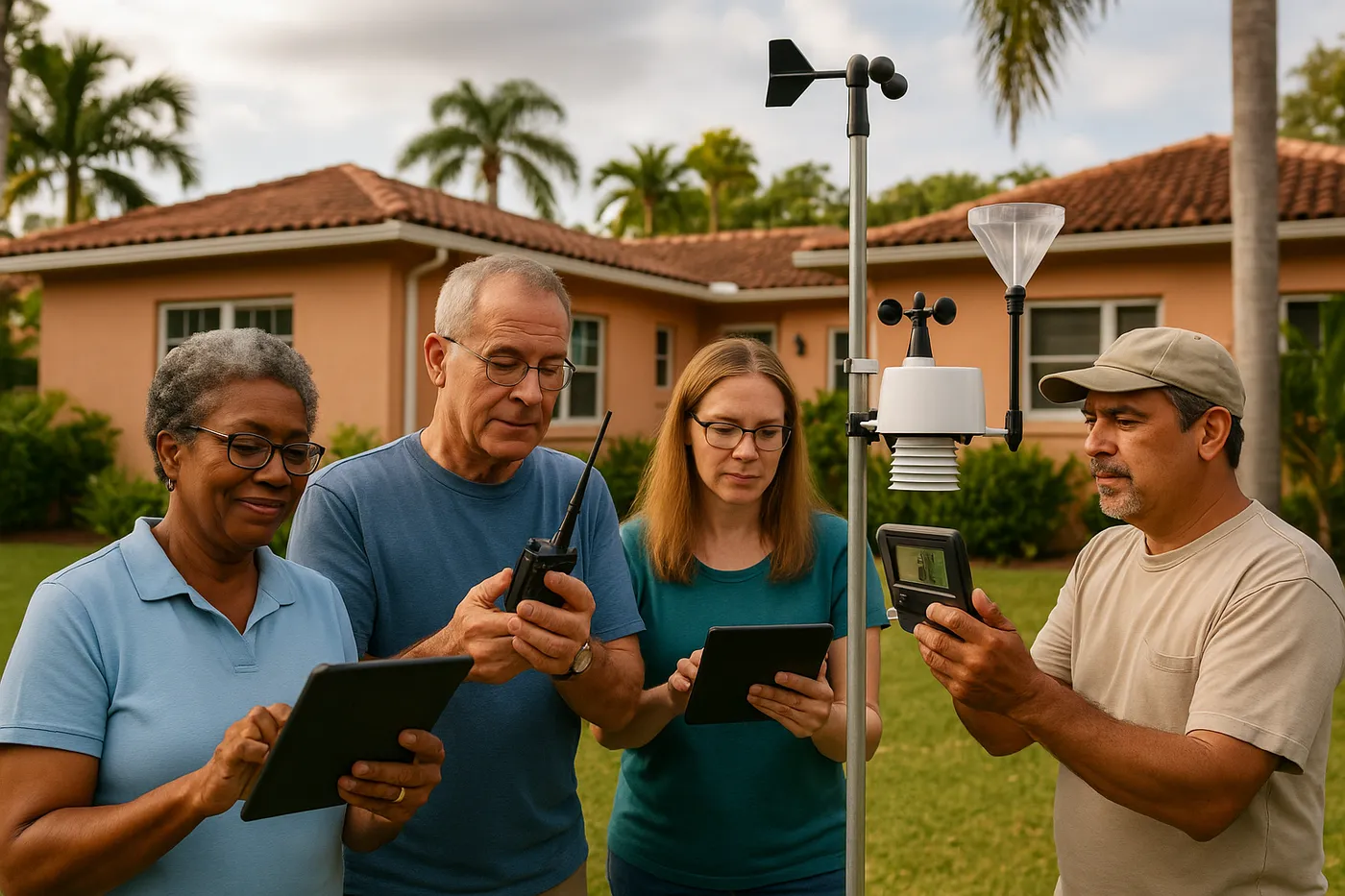
Photo 6: Community Weather Watch
Caption: Members of the Coral Gables neighborhood weather monitoring network maintain their community early-warning system, checking rain gauges, wind measurements, and communication equipment that provides hyperlocal climate data to residents. This grassroots climate monitoring represents community self-reliance development in response to learning that official weather services often lack precision needed for neighborhood-level emergency planning. The volunteers operate sophisticated equipment with trained competence, demonstrating how climate adaptation includes development of community technical expertise.
Prompt: Diverse group of neighbors operating weather monitoring equipment in suburban Florida backyard, digital weather station with rain gauge and wind measurement tools, middle-aged volunteers checking data on tablets and radio equipment, Coral Gables Florida residential setting, shot on Canon EOS 5D Mark IV with 35mm f/5.6 lens, late afternoon natural light, composition emphasizing community cooperation and technical competence, professional documentation style, award-winning photojournalism, National Geographic quality
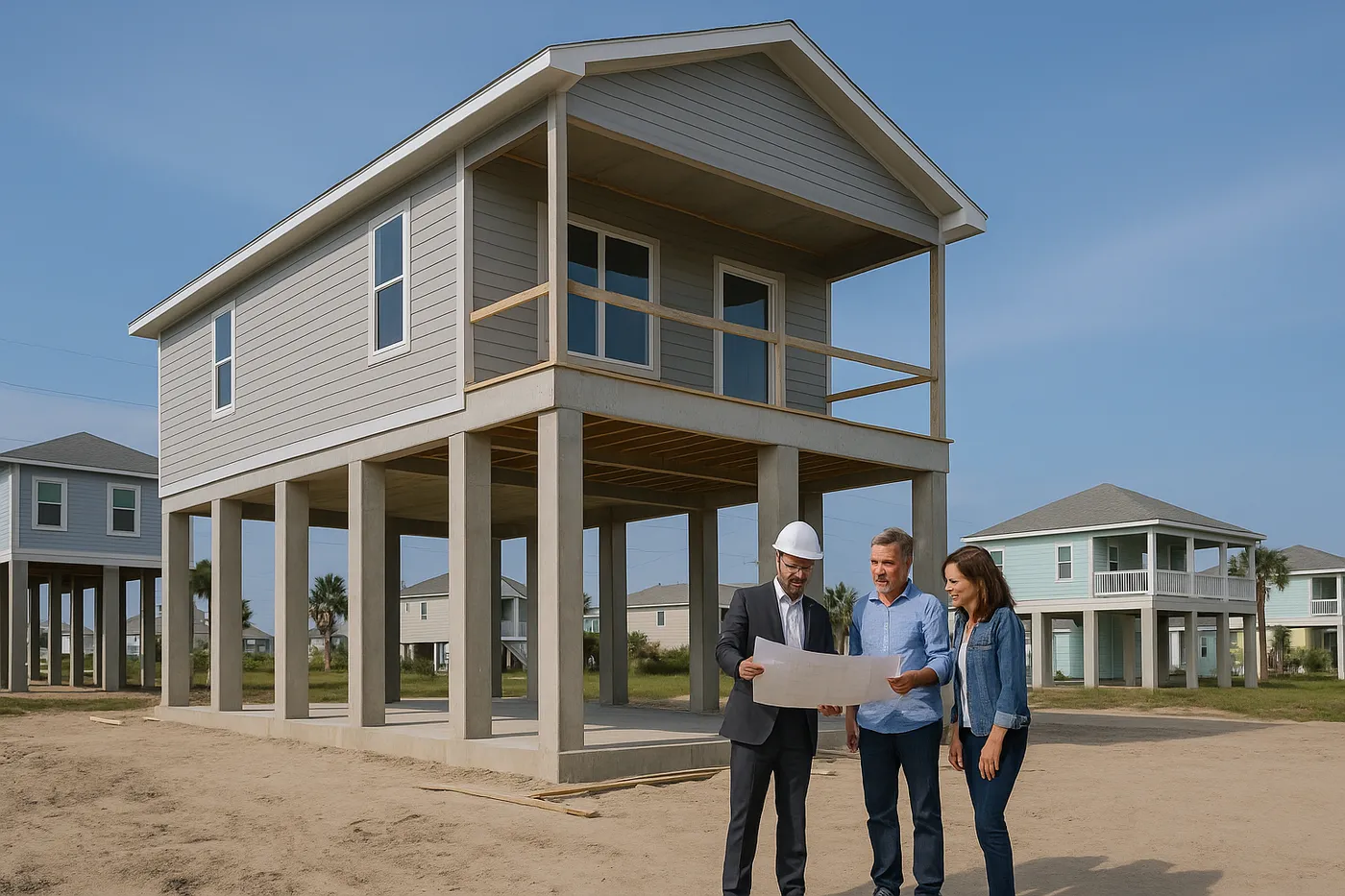
Photo 7: Adaptive Architecture
Caption: New residential construction in Galveston, Texas, incorporates climate-resistant design features including reinforced concrete foundations elevated 12 feet above sea level, hurricane-rated windows, and integrated backup power systems. Architect Maria Santos explains adaptive design principles to homeowners who are building with explicit expectation of regular severe weather events. This represents evolution of building practices from designing for normal weather with emergency features to designing for extreme weather as baseline expectation, fundamentally changing how humans create permanent shelter.
Prompt: Modern elevated house under construction in Galveston Texas, reinforced concrete pillars raising structure above flood level, architect and homeowners reviewing plans at construction site, Gulf Coast residential area with storm-resistant architectural features visible, shot on Canon EOS 5D Mark IV with 24-70mm f/8 lens, clear natural daylight showing architectural details, wide shot emphasizing elevated foundation and storm-resistant design elements, professional architectural documentation style, award-winning photojournalism, World Press Photo style
Photographer Portrait Prompt
Elena Vasquez, Puerto Rican-American woman in her late 30s, shoulder-length dark hair, wearing practical field clothing, standing in front of hurricane-damaged and rebuilt architecture, professional documentary photographer with confident expression, warm brown eyes showing compassion and determination, professional portrait, shot on Canon EOS 5D Mark IV

